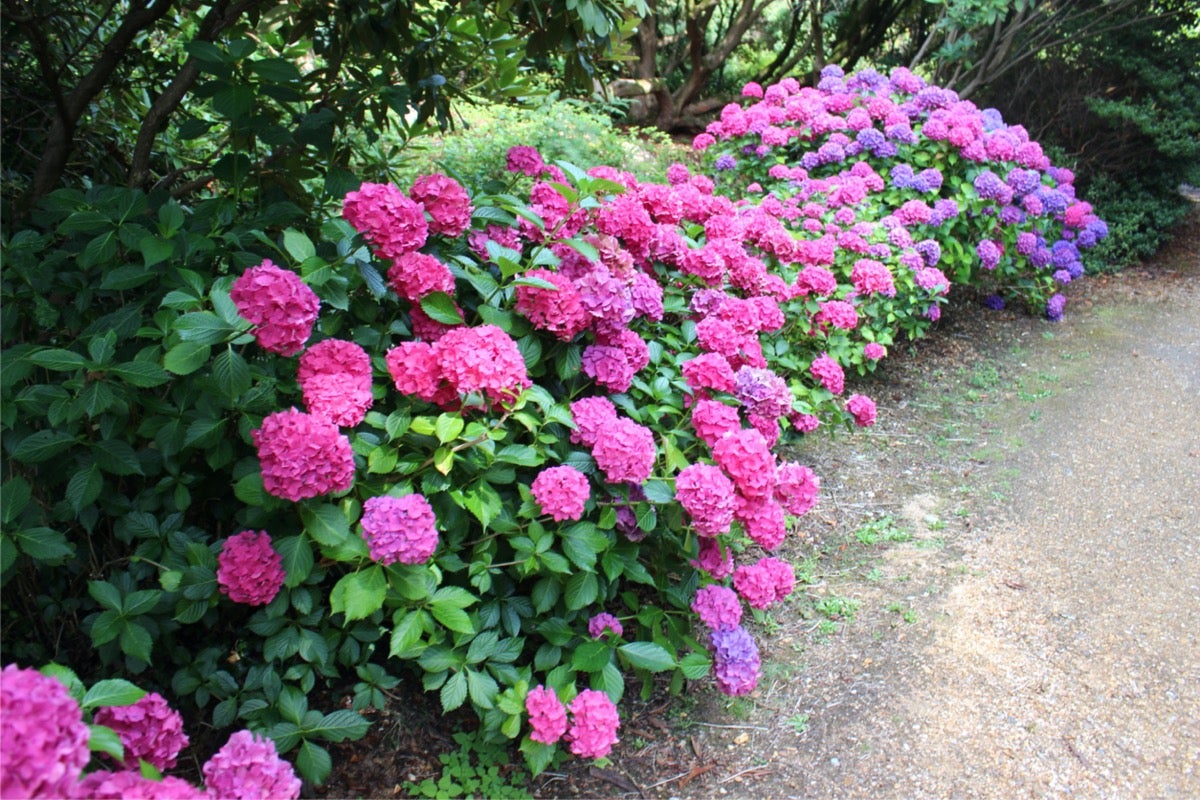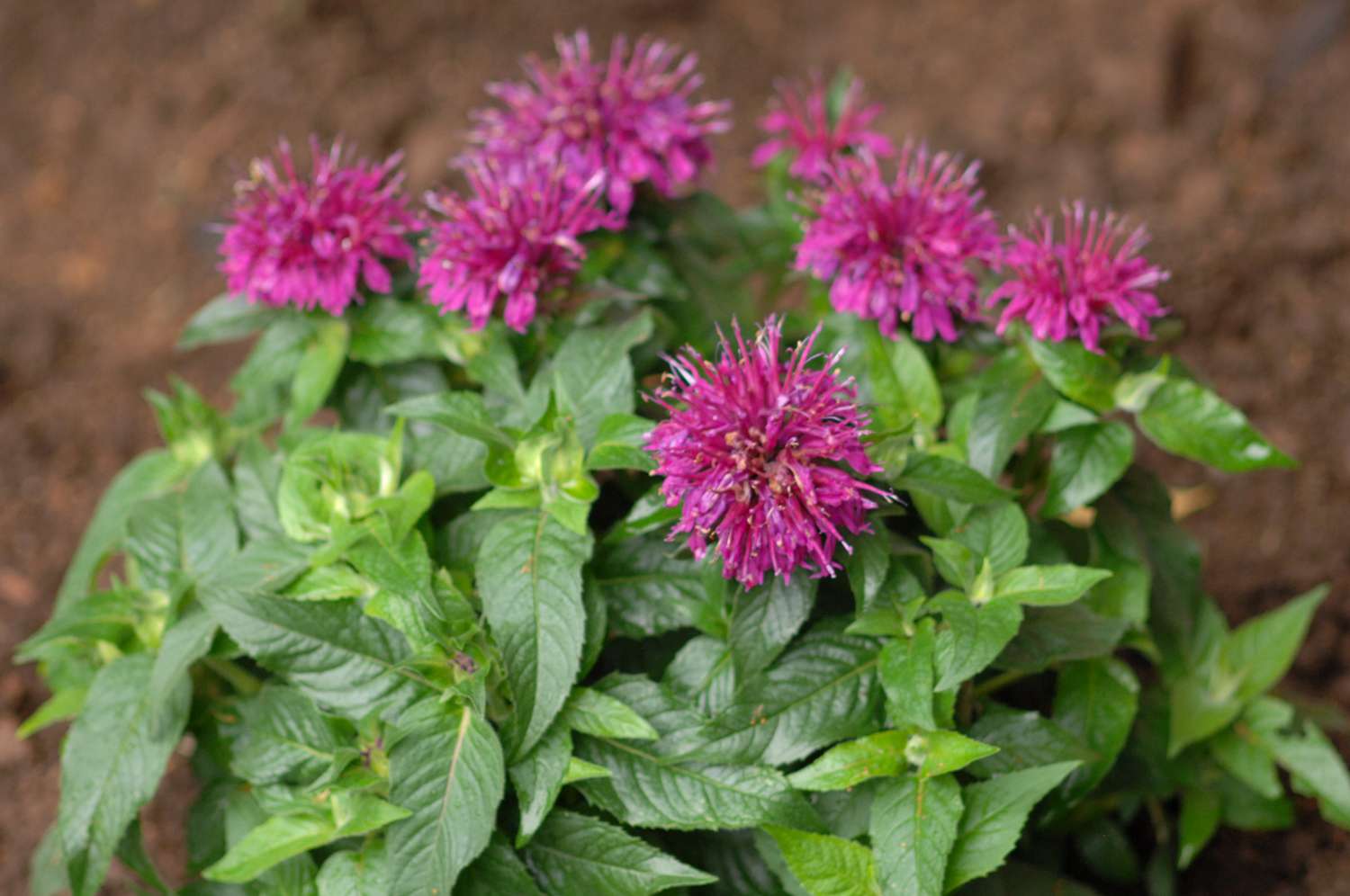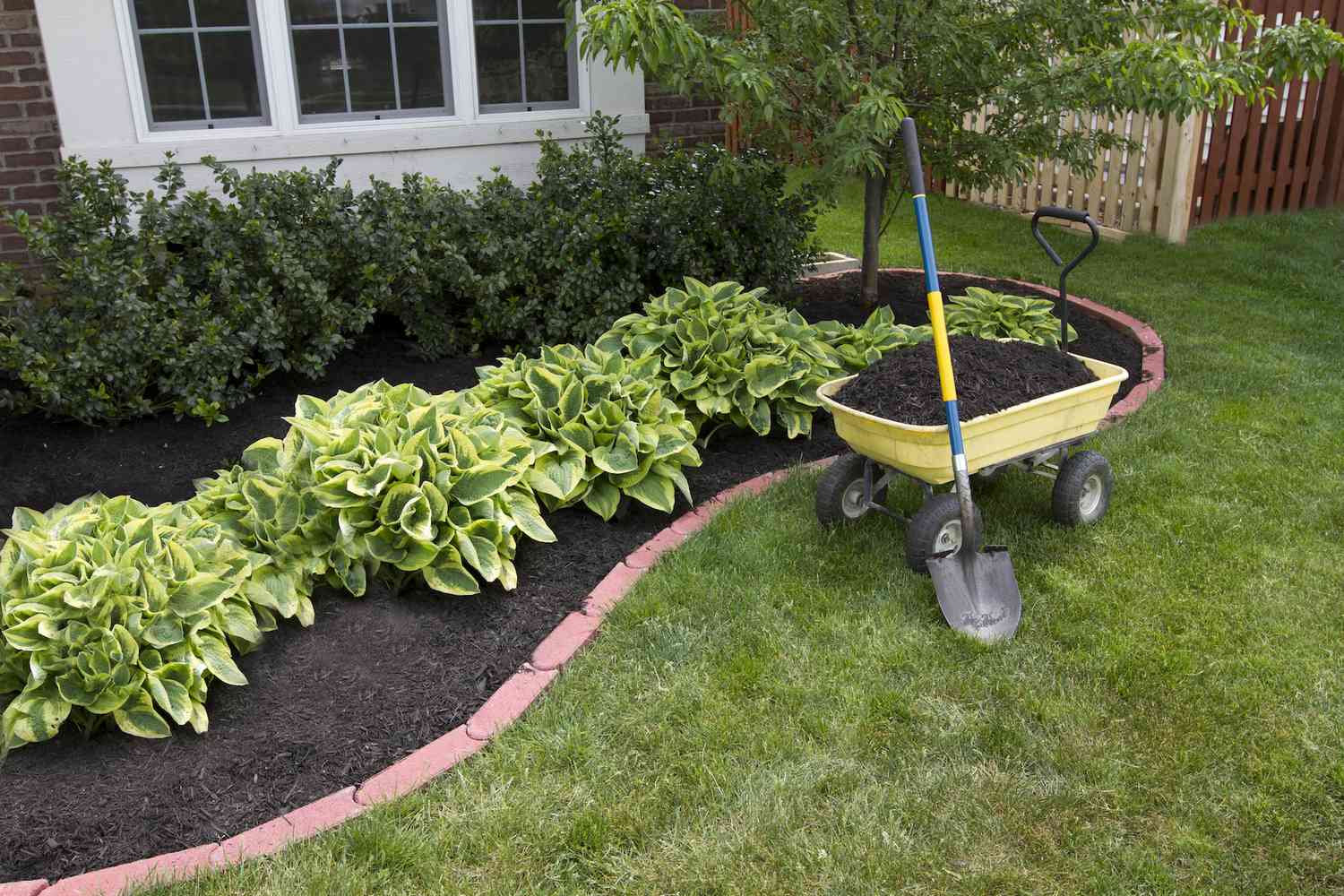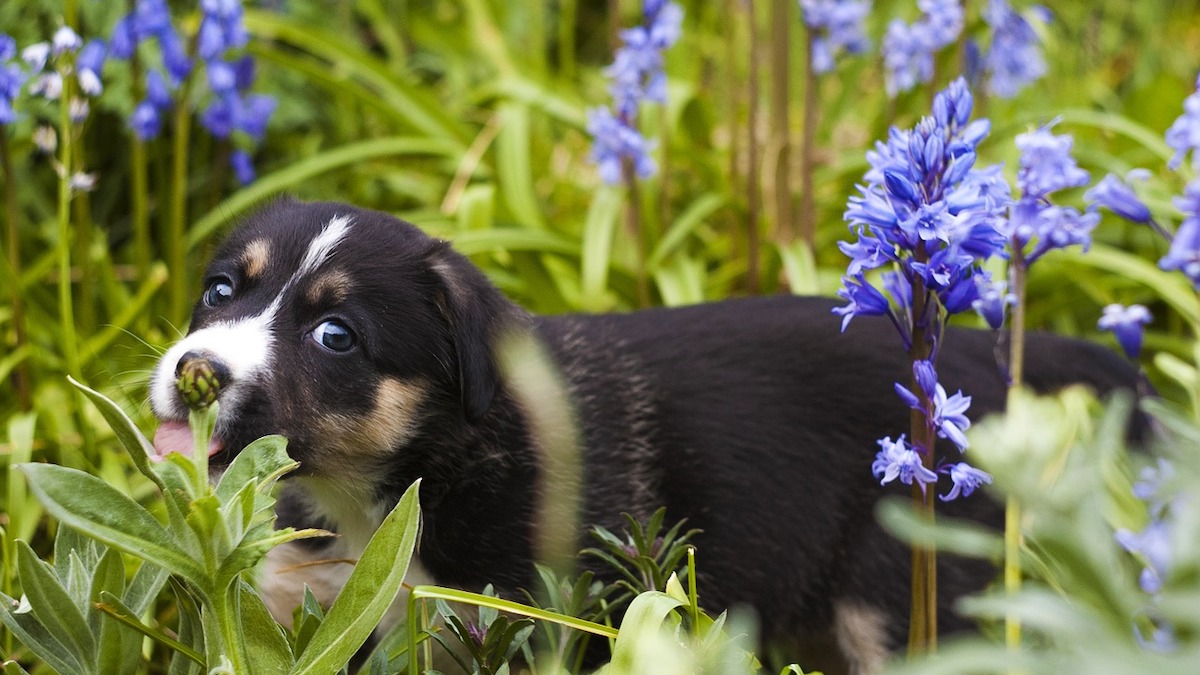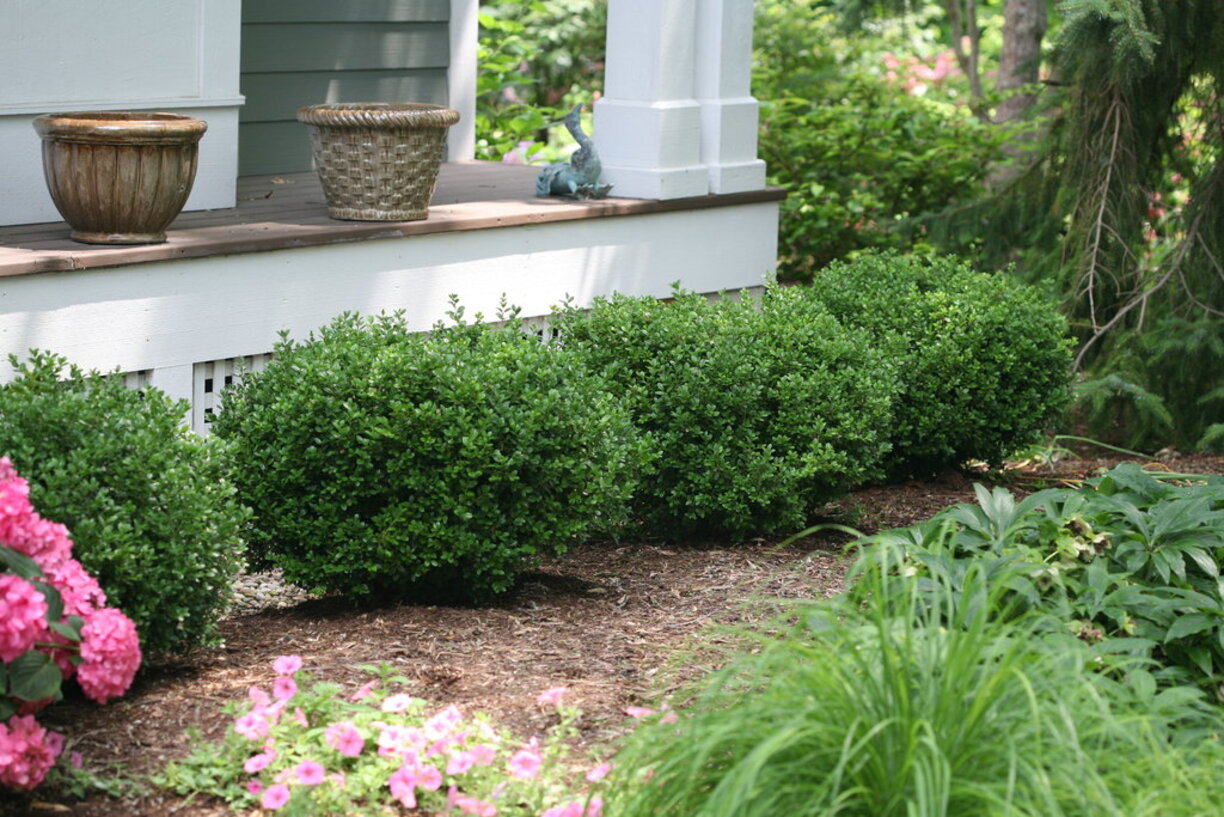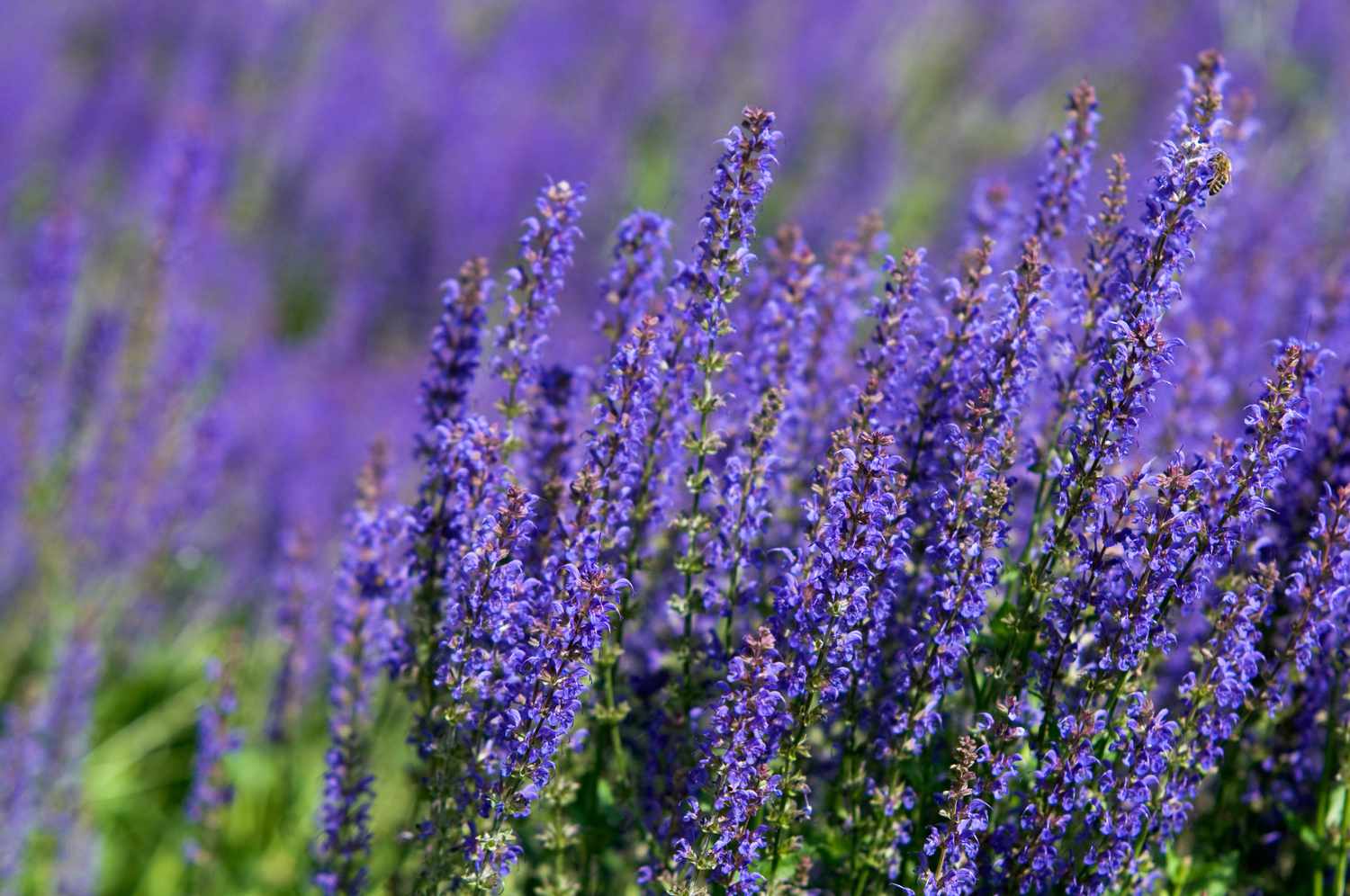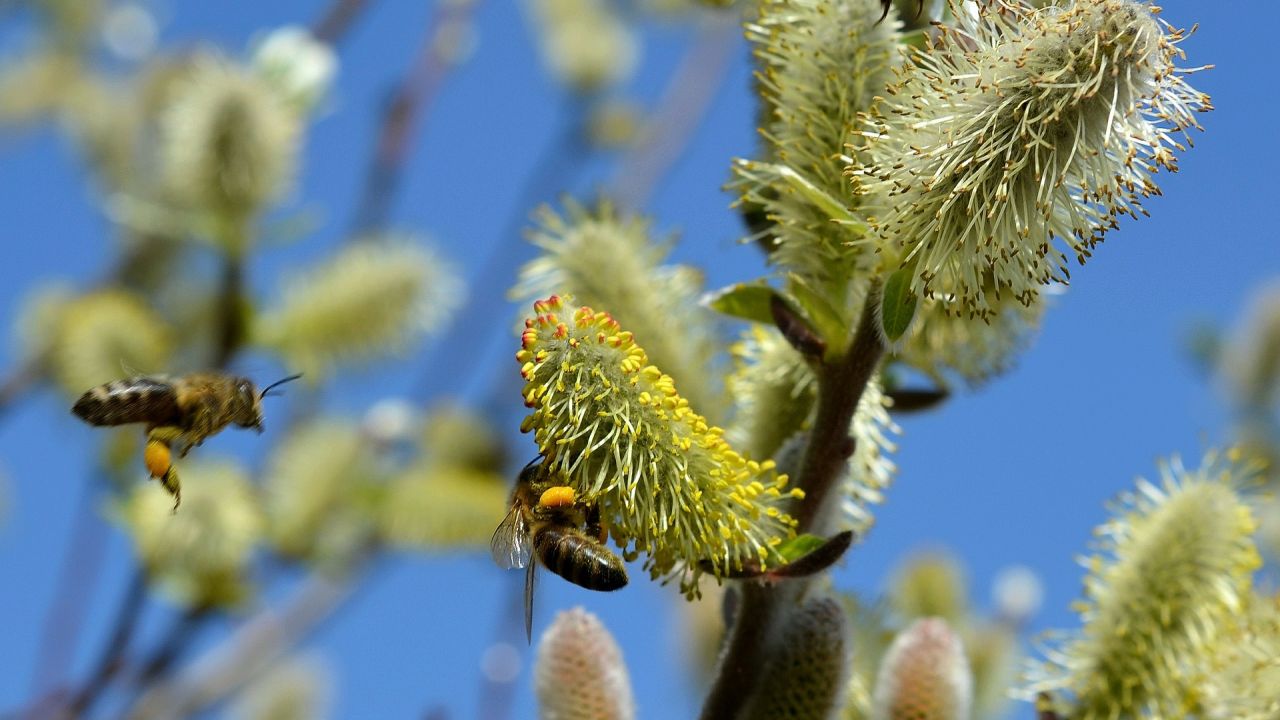Home>Gardening Techniques>Plant Care>What Are Shrubs?


Plant Care
What Are Shrubs?
Modified: January 22, 2024
Discover the definition and importance of shrubs in gardening. Learn about plant care tips and techniques for growing and maintaining shrubs to enhance your landscape.
(Many of the links in this article redirect to a specific reviewed product. Your purchase of these products through affiliate links helps to generate commission for Chicagolandgardening.com, at no extra cost. Learn more)
Table of Contents
Introduction
Welcome to the wonderful world of shrubs! Whether you are a seasoned gardening enthusiast or just starting to explore the joys of plant care, shrubs are sure to be a delightful addition to your green oasis. These versatile and hardy plants have been beloved by gardeners for centuries, offering a wide range of benefits and adding beauty to any landscape.
But what exactly are shrubs? In simple terms, shrubs are woody plants with multiple stems and generally smaller in size compared to trees. They can be evergreen or deciduous, meaning they either retain their leaves year-round or shed them during certain seasons. Shrubs come in a variety of shapes, sizes, and colors, making them a versatile choice for any garden style or design.
One of the defining characteristics of shrubs is their ability to thrive in a wide range of conditions. From sunny gardens to shady corners, and from dry soil to moist environments, there is a shrub suitable for almost every garden space. This adaptability, combined with their low maintenance requirements, makes shrubs a popular choice for both beginners and experienced gardeners.
In this comprehensive guide, we will delve into the world of shrubs, exploring their different varieties, benefits, and uses. We will also discuss how to plant and care for shrubs, common problems you may encounter, and solutions to overcome them. So, whether you are looking to create a stunning hedge, add a pop of color to your garden, or attract pollinators, join us on this journey to discover everything you need to know about shrubs.
Definition and Characteristics of Shrubs
Shrubs are a diverse group of plants that add structure, beauty, and functionality to gardens and landscapes. Unlike trees, which have a single trunk and typically reach towering heights, shrubs are characterized by multiple stems and a relatively shorter stature.
One of the key features of shrubs is their woody nature. They have a durable framework consisting of hard stems and branches that provide support and strength. This woody structure not only adds visual interest but also contributes to the longevity of the plant.
Shrubs come in various sizes, ranging from miniature varieties that grow only a few inches tall to larger specimens that can reach several feet in height. Their growth habit can be bushy or more upright, depending on the species and variety.
Another defining characteristic of shrubs is their foliage. Some shrubs are evergreen, meaning they retain their leaves year-round. This provides your garden with a splash of color and visual interest even during the winter months. On the other hand, deciduous shrubs lose their leaves during certain seasons, revealing intricate branch patterns and allowing for seasonal changes in the landscape.
Shrubs are also admired for their flowers and fruits. Many shrubs produce stunning blooms in various colors, shapes, and sizes, attracting pollinators such as butterflies and bees. In addition, some shrubs bear fruits that add further aesthetic appeal while also providing a food source for birds and other wildlife.
One of the greatest advantages of incorporating shrubs into your garden is their low maintenance requirements. Once established, they are generally hardy and resilient, requiring minimal watering and care compared to more delicate plants. However, it is important to note that proper pruning and regular maintenance are still necessary to ensure the health and vitality of your shrubs.
Whether you are looking to create a hedge for privacy, add focal points and boundaries to your garden, or introduce different colors and textures, shrubs offer endless possibilities for your landscape design. They are a versatile and valuable addition to any outdoor space, providing both aesthetic beauty and functional benefits.
Varieties of Shrubs
Shrubs come in an incredible array of varieties, each with its own unique characteristics and aesthetic appeal. Whether you prefer compact and tidy shrubs or sprawling and exuberant ones, there is a shrub for every taste and garden style. Let’s explore some of the most popular varieties of shrubs:
- Flowering Shrubs: These shrubs are prized for their beautiful and often fragrant blooms. From the vibrant blossoms of roses to the delicate petals of hydrangeas, flowering shrubs add a burst of color and charm to any garden.
- Evergreen Shrubs: Perfect for creating year-round greenery, evergreen shrubs retain their leaves throughout the year, offering a consistent and visually pleasing backdrop. Some popular evergreen shrubs include boxwoods, hollies, and yews.
- Fruit-Bearing Shrubs: These shrubs not only provide visual interest with their flowers and foliage but also offer a tasty reward in the form of fruits. Blueberries, raspberries, and elderberries are just a few examples of fruit-bearing shrubs that can be grown in gardens or even containers.
- Deciduous Shrubs: With their striking seasonal changes, deciduous shrubs add a dynamic element to the landscape. From the fiery hues of autumn leaves to the bare branches showcasing intricate silhouettes in winter, deciduous shrubs bring a captivating beauty to your garden.
- Low-Growing Shrubs: For those seeking a more compact and ground-hugging option, low-growing shrubs fit the bill. These varieties are perfect for creating borders, groundcovers, or filling in gaps in flower beds with their dense foliage and neat growth habit.
- Ornamental Shrubs: Ornamental shrubs are valued for their unique features, such as colorful bark, interesting textures, or unusual growth patterns. Examples include the fascinating contorted filbert, the vibrant coral bark maple, and the eye-catching Harry Lauder’s walking stick.
These are just a few examples of the many varieties of shrubs available. When selecting shrubs for your garden, consider factors such as the climate of your region, the amount of sun or shade the area receives, and the overall aesthetic you wish to achieve. By carefully choosing a mix of shrubs with different colors, sizes, and bloom times, you can create a visually stunning and diverse landscape.
Benefits and Uses of Shrubs
Shrubs offer a wide range of benefits and serve many important purposes in gardens and landscapes. Beyond their beauty and aesthetic appeal, shrubs provide numerous advantages that enhance the overall environment. Here are some of the benefits and uses of shrubs:
- Erosion Control: Shrubs with deep root systems play a crucial role in preventing soil erosion. Their roots help stabilize the soil, especially on slopes or areas prone to erosion, reducing the risk of landslides and improving water retention.
- Privacy and Screening: With their dense foliage, shrubs can create natural barriers and provide privacy in outdoor spaces. They can be strategically planted to shield your garden from prying eyes or to block unsightly views, adding a sense of seclusion and tranquility.
- Habitat and Wildlife Support: Many shrubs provide valuable habitat and food sources for birds, butterflies, bees, and other wildlife. They offer shelter, nesting spaces, and nourishment through their flowers, fruits, and seeds, contributing to biodiversity and ecological balance.
- Air Quality Improvement: Shrubs, like all plants, help purify the air by absorbing carbon dioxide and releasing oxygen through the process of photosynthesis. They also filter out pollutants and dust particles, contributing to cleaner and healthier air in your garden and surrounding environment.
- Noise Reduction: Dense and well-placed shrubs can help absorb and reduce noise, acting as a natural sound barrier. They can mitigate the impact of traffic noise or other disruptive sounds, creating a more peaceful and tranquil outdoor environment.
- Soil Improvement: Shrubs with deep root systems penetrate the soil, helping to improve its structure and fertility. They prevent soil compaction, promote water infiltration, and contribute organic matter through leaf litter, enhancing the overall health and productivity of the soil.
- Visual Interest and Landscaping: One of the primary uses of shrubs is to add beauty and visual interest to gardens and landscapes. They provide structure, texture, and color, helping to create a harmonious and aesthetically pleasing outdoor space. Whether used as focal points, hedges, or as part of mixed border plantings, shrubs serve as the backbone of a well-designed landscape.
With their versatility and diverse range of uses, it’s clear that shrubs are invaluable additions to any garden or landscape. By carefully choosing and tending to the right shrubs, you can enjoy all these benefits while creating a visually stunning and sustainable outdoor environment.
Environmental and Ecological Importance of Shrubs
Shrubs play a vital role in the environment and contribute to the overall health and balance of ecosystems. These plants have a significant impact on various environmental factors and provide essential benefits for both wildlife and the surrounding habitat. Let’s explore the environmental and ecological importance of shrubs:
- Biodiversity Support: Shrubs are critical components of biodiversity, providing food and shelter for a wide range of organisms. Their flowers attract pollinators such as bees, butterflies, and hummingbirds, contributing to the pollination of other plant species. Additionally, shrubs offer nesting sites and protective cover for birds, small mammals, and insects, supporting the overall diversity of the ecosystem.
- Soil Stabilization: The extensive root systems of shrubs help stabilize soil and prevent erosion. Their roots bind the soil together, reducing the risk of landslides and protecting water quality by minimizing sediment runoff. This is particularly beneficial in areas with sloping terrain or regions prone to heavy rainfall.
- Carbon Sequestration: Shrubs, like all plants, absorb carbon dioxide from the atmosphere through photosynthesis. They store carbon in their tissues, helping to mitigate climate change by reducing greenhouse gas levels. The woody structure of shrubs allows for long-term carbon storage, making them valuable allies in the fight against global warming.
- Water Management: Shrubs play a crucial role in water management by regulating water flow and preventing flooding. Their roots help to absorb excess water, reducing the risk of water runoff and soil erosion. Moreover, shrubs can enhance water infiltration, allowing water to penetrate the soil and recharge groundwater reserves.
- Microclimate Creation: Shrubs can help create microclimates within a garden or landscape. They provide shade and shelter, reducing temperature fluctuations and protecting more delicate plants from extreme weather conditions. This microclimate effect can also benefit beneficial insects and other small organisms that contribute to the overall ecological balance.
- Wildlife Habitat: Shrubs are valuable sources of food and shelter for countless wildlife species. They provide berries, fruits, and seeds that constitute an important food source for birds, mammals, and insects. Additionally, shrubs offer protective cover and nesting sites, supporting the life cycles and populations of various wildlife species.
- Beautification of Urban Areas: Shrubs play a crucial role in improving the aesthetics of urban areas and softening the harshness of built environments. They provide green spaces, visual appeal, and a connection to nature, offering a respite from the concrete jungle and contributing to the well-being of urban dwellers.
By recognizing and appreciating the environmental and ecological importance of shrubs, we can make informed choices in landscaping and plant selection, fostering a healthier and more sustainable relationship with the natural world.
How to Plant and Care for Shrubs
Planting and caring for shrubs is relatively straightforward, but ensuring their success requires proper attention and care. Whether you’re a beginner or an experienced gardener, these guidelines will help you establish and maintain healthy, thriving shrubs in your garden:
- Site Selection: Before planting, assess the site and choose a location that meets the specific requirements of the shrub. Consider factors such as sunlight exposure, soil type, and drainage. Different shrubs have different preferences, so it’s important to match the plant to the site.
- Soil Preparation: Ensure the soil is well-prepared before planting. Loosen the soil and remove any weeds or grass in the planting area. Incorporate organic matter, such as compost or well-rotted manure, to improve soil fertility and drainage.
- Planting Hole: Dig a hole that is wider and slightly shallower than the root ball of the shrub. Gently place the shrub in the hole, making sure the top of the root ball is level with or slightly above the surrounding soil surface.
- Backfilling and Watering: Fill the hole with soil, firming it gently around the roots. Water the shrub thoroughly to settle the soil and remove any air pockets. Apply a layer of organic mulch around the base of the shrub, leaving a gap around the stem to prevent rot.
- Watering and Irrigation: Proper watering is essential for the establishment and continued health of shrubs. Water deeply and regularly, especially during the first growing season. Be mindful of the specific water requirements of the shrub species and adjust watering accordingly.
- Fertilizing: Feed shrubs with a balanced, slow-release fertilizer in early spring to promote healthy growth. Be cautious not to over-fertilize, as this can lead to excessive foliage growth at the expense of blooms or fruit production. Follow the manufacturer’s instructions for proper application.
- Pruning and Maintenance: Regular pruning is necessary to maintain the shape, health, and size of shrubs. Prune during the appropriate time for each specific shrub species, as pruning times can vary. Remove dead, damaged, or diseased branches, and thin out overcrowded areas to improve air circulation.
- Pest and Disease Control: Monitor shrubs for signs of pests or diseases. Identify and address any issues promptly to prevent further damage. Integrated pest management practices, such as using natural predators or targeted treatments, can help maintain a healthy balance and minimize the need for harsh chemicals.
- Winter Protection: Some shrubs may require winter protection, especially in colder climates. Consider using mulch, burlap wraps, or protective coverings to shield the shrubs from harsh winter conditions and prevent frost damage.
By following these guidelines and giving proper attention to the specific needs of the shrubs in your garden, you can enjoy healthy, beautiful shrubs that will enhance the overall beauty and vitality of your outdoor space.
Common Problems with Shrubs and Solutions
While shrubs are generally low-maintenance plants, they can sometimes encounter problems that affect their health and appearance. Understanding and addressing these common issues promptly can help ensure the vitality and longevity of your shrubs. Here are some common problems you may encounter with shrubs and their solutions:
- Pest Infestations: Shrubs can be susceptible to various pests such as aphids, scale insects, and mites. Regularly inspect your shrubs for signs of pest activity, such as distorted foliage or sticky residue. Use organic insecticidal sprays or introduce beneficial insects to control the population.
- Fungal Diseases: Damp and humid conditions can lead to fungal diseases like powdery mildew or leaf spot. To prevent these issues, avoid overhead watering and ensure adequate air circulation. If signs of fungal infection appear, prune affected areas and apply appropriate fungicides as directed.
- Improper Pruning: Pruning shrubs incorrectly can result in poor growth, reduced flowering, and an overall unattractive appearance. Educate yourself on proper pruning techniques for each specific shrub variety to avoid common mistakes. Prune at the recommended time and avoid excessive pruning that can stress the plant.
- Poor Soil Drainage: Shrubs may suffer from root rot or other issues if the soil stays constantly wet. Improve drainage by amending the soil with organic matter and creating raised beds, especially in areas with heavy clay soil. Consider using well-draining containers for shrubs that prefer drier conditions.
- Watering Issues: Overwatering or underwatering can have detrimental effects on shrubs. It is important to water shrubs deeply and consistently while also avoiding excessive moisture. Check soil moisture regularly and adjust watering frequency based on the specific needs of the shrub species.
- Poor Planting Practices: Incorrect planting techniques, such as placing the shrub too deep or not providing enough space for root growth, can lead to poor establishment and restricted growth. Ensure you follow proper planting guidelines, including selecting an appropriate site, preparing the soil adequately, and planting at the correct depth.
- Winter Damage: Cold temperatures and frost can damage shrubs, particularly in regions with harsh winters. Protect sensitive shrubs by applying a layer of mulch around the base, using burlap wraps, or constructing temporary windbreaks. Avoid pruning in late summer or fall, as it can stimulate new growth that is more susceptible to winter damage.
Preventative measures, such as maintaining good hygiene, monitoring plants regularly, and providing optimal growing conditions, can go a long way in minimizing the occurrence of these problems. It is also beneficial to select shrub varieties that are suitable for your specific climate and conditions. Taking proactive steps to address and resolve issues as they arise will help ensure the health and longevity of your shrubs in the long run.
Pruning and Shaping Shrubs
Pruning is an essential practice for maintaining the health, shape, and appearance of shrubs. Proper pruning helps promote vigorous growth, encourage abundant blooms or fruit production, and maintain the desired size and shape of the shrub. Understanding the principles and techniques of pruning will allow you to effectively shape and rejuvenate your shrubs. Here are some key considerations for pruning and shaping shrubs:
- Timing: The timing of pruning depends on the specific shrub variety and its flowering or growth habits. Spring-flowering shrubs should be pruned immediately after flowering, as they produce blooms on the previous season’s growth. Summer-flowering shrubs, on the other hand, should be pruned in late winter or early spring before new growth begins. It is important to research and understand the specific pruning requirements of each shrub species.
- Tools: Invest in high-quality pruning tools such as bypass pruners, loppers, and pruning saws. Clean and sharpen your tools regularly to ensure clean cuts and prevent the spread of diseases. Use clean, sharp tools when pruning to minimize damage and promote faster healing.
- Thin Out Overgrowth: Remove any dead, damaged, or diseased branches first. Then, selectively thin out any overcrowded or crossing branches to improve air circulation and allow sunlight to reach the inner parts of the shrub. Thinning out the shrub will promote better growth and reduce the risk of pests and diseases.
- Rejuvenation Pruning: Over time, shrubs may become leggy or lose their vigor. Rejuvenation pruning involves cutting back the entire shrub to a few inches above the ground to stimulate new growth. This technique is best suited for shrubs that tolerate severe pruning and can rejuvenate from old wood, such as lilacs or spireas.
- Hedge Pruning: To create a formal or informal hedge, regular pruning is necessary to maintain a neat and compact shape. Use string guides or a level to ensure a straight and even hedge. Prune the sides of the hedge slightly inward, tapering towards the top to allow sunlight to reach the lower branches. Regularly remove any new growth that extends beyond the desired shape.
- Shaping and Espalier: Shaping shrubs into specific forms can create striking visual displays. Espalier, for example, involves training shrubs to grow flat against a wall or trellis in a pattern or design. Use pruners and carefully manipulate the branches to achieve the desired shape or form. Start by pruning in the dormant season and continue shaping the shrub over time.
- Basic Pruning Principles: When making cuts, use the “three-cut method” to avoid tearing or damaging the bark. Make the first cut underneath the branch, a few inches away from the main trunk, about one-third of the way through the branch. The second cut is an inch further out from the first, sawing from the top down, allowing the weight of the branch to prevent tearing. The final cut is made just outside the branch collar, avoiding cutting too close or into the collar.
Remember, pruning shrubs is a gradual process, and it is best to err on the side of caution by making conservative cuts. Aim to enhance the natural shape of the shrub while maintaining its health and vigor. By understanding the specific needs and characteristics of each shrub variety and following proper pruning techniques, you can shape and maintain stunning shrubs that contribute to the overall beauty and structure of your garden.
Popular Shrubs for Different Landscapes
Choosing the right shrubs for your landscape is essential in creating a beautiful and cohesive outdoor space. With countless options to choose from, finding the perfect shrubs for your specific landscape can be both exciting and overwhelming. Consider the following popular shrubs, grouped by landscape type, to help guide your selection:
- Cottage Gardens: Cottage gardens often have a romantic, informal feel. Consider planting shrubs such as roses, hydrangeas, and lavender to create a delightful mix of colors, textures, and fragrances. These shrubs can add charm and a sense of nostalgia to cottage-style landscapes.
- Formal Gardens: For a more structured and elegant landscape, consider shrubs like boxwoods, yews, and hollies. These evergreen shrubs offer neat, compact growth and can be sheared into formal shapes. They provide year-round greenery and a polished appearance to formal garden designs.
- Native Gardens: Native shrubs are well-suited for eco-friendly landscapes and are adapted to the local environment. They provide habitat and food for local wildlife while requiring less maintenance. Popular native shrubs include serviceberry, winterberry, and mountain laurel, among others.
- Coastal Gardens: Shrubs that can tolerate salt spray and thrive in coastal conditions are ideal for seaside landscapes. Consider planting shrubs like rugosa roses, seaside goldenrod, and bayberry. These tolerant shrubs can withstand the challenges of salt, wind, and sandy soils typically found in coastal areas.
- Japanese Gardens: Japanese gardens often prioritize simplicity, balance, and tranquility. Choose shrubs such as Japanese maples, camellias, and azaleas to create a harmonious and serene landscape. These shrubs offer beautiful foliage, delicate blooms, and complement the aesthetics of Japanese garden design.
- Urban Gardens: In urban settings with limited space, compact shrubs are an excellent choice. Look for small varieties like dwarf lilacs, dwarf conifers, and compact hydrangeas. These shrubs provide a splash of color and interest without overwhelming smaller garden spaces.
- Butterfly Gardens: To attract butterflies and other pollinators, incorporate shrubs like butterfly bush, buddleia, and sweet pepperbush. These shrubs produce colorful and nectar-rich flowers that serve as a valuable food source for butterflies, creating a buzzing and vibrant garden environment.
- Shade Gardens: For areas with limited sunlight, shade-loving shrubs offer an opportunity to add interest to these often neglected spaces. Opt for shrubs such as rhododendrons, azaleas, and hydrangeas that thrive in shady conditions. These shrubs bring vibrant blooms and lush foliage to shaded areas of the garden.
When selecting shrubs for your landscape, consider the specific growing conditions of your site, such as sunlight, soil type, and climate. Also, think about the desired maintenance level and the ultimate size of the shrubs. By choosing appropriate shrubs for your landscape type, you can create a stunning and harmonious outdoor environment that reflects your personal style and vision.
Conclusion
Shrubs are a captivating and versatile addition to any garden or landscape. With their diverse range of sizes, colors, and forms, shrubs offer endless possibilities for creating beautiful outdoor spaces. From providing visual interest and structure to attracting wildlife and contributing to environmental health, shrubs play a vital role in our gardens and ecosystems.
Understanding the characteristics and unique needs of different shrub varieties is essential for successful cultivation. By choosing the right shrubs for your specific landscape type, you can create a balanced and harmonious outdoor environment. Paying attention to proper planting techniques, watering, fertilizing, and pruning will ensure the health and longevity of your shrubs.
Furthermore, shrubs provide numerous benefits beyond their aesthetic appeal. They help control erosion, improve air and water quality, support wildlife, and contribute to biodiversity. Whether you have a cottage garden, a formal landscape, or a native plant garden, there are shrubs to suit every style and preference.
As you embark on your journey of planting and caring for shrubs, remember to embrace creativity and infuse your personal touch into your landscape design. Experiment with different combinations of shrubs, consider the changing seasons, and explore various pruning and shaping techniques to make your garden truly unique.
By embracing the beauty and versatility of shrubs, you can create a vibrant and sustainable outdoor sanctuary. So, roll up your sleeves, put on your gardening gloves, and let the world of shrubs inspire you to transform your outdoor space into a thriving and captivating oasis.

